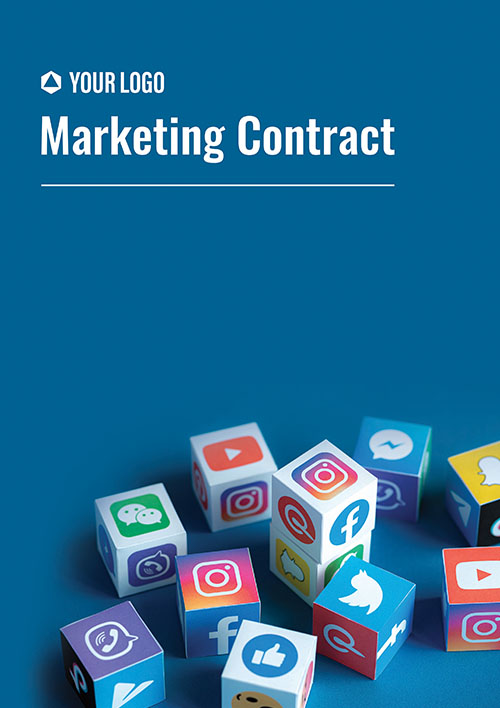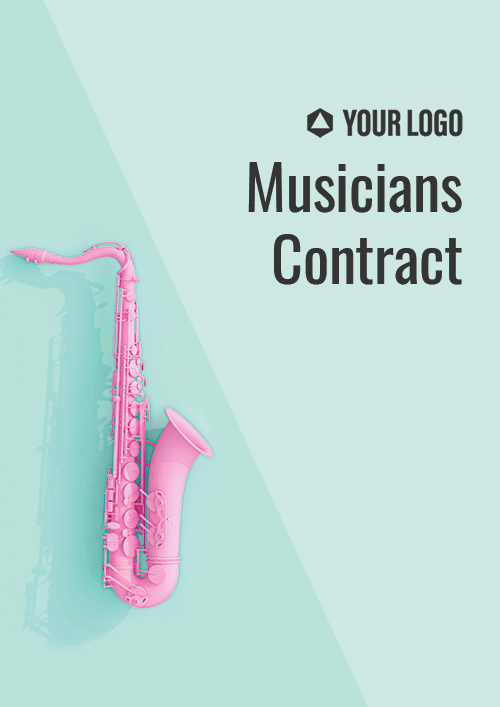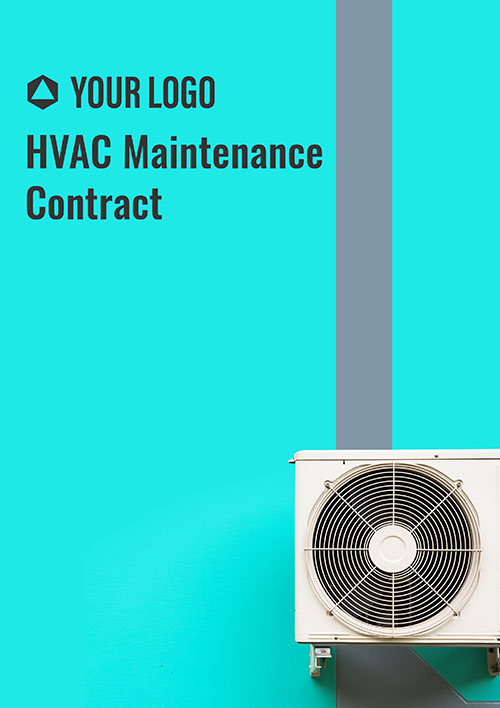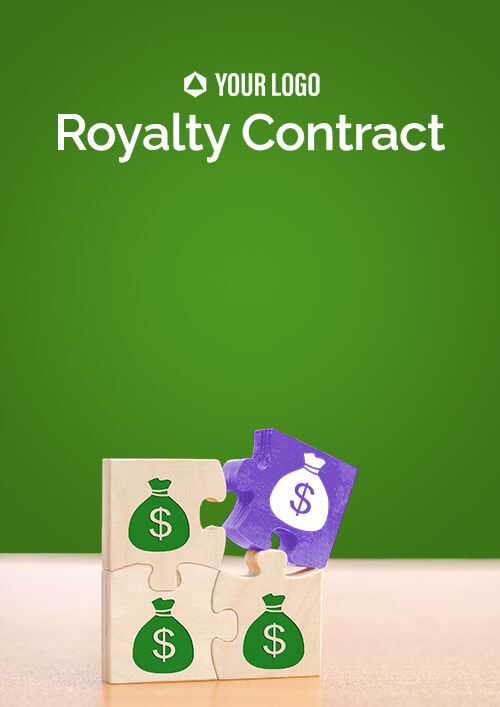
Freelance Graphic
Design Contract
Empty space
1x
2x
3x
Prepared for:
[CLIENT/CLIENT COMPANY]
Prepared by:
[GRAPHIC DESIGNER]
Freelance Graphic Design Contract
Freelance Graphic Design Contract
This Freelance Graphic Designer Contract (hereby referred to as the “Contract”) is entered on [Date] between
[Client/Client Company Name], incorporated at [Client/Client Company Address] (hereby referred to as the “Client”)
and
[Graphic Designer Name], incorporated at [Graphic Designer Address] (hereby referred to as the “Graphic Designer”).
The Client and the Graphic Designer shall be collectively referred to as “Parties” and individually as “Party”.
The Client wishes to engage the Graphic Designer in Graphic Designing and other design services, as elaborated in this Contract.
The Parties hereby agree to the below terms and conditions:
Empty space
1x
2x
3x
Terms of the Contract
Terms of the Contract
1. Scope of Work
1. Scope of Work
The Graphic Designer agrees to provide the following services:
- Logo Designing
- Brand Printing
- [Add services]
2. Term
2. Term
This Contract shall commence as of the Effective Date and shall continue for [Time Period] following the acceptance of the Contract.
3. Deliverables
3. Deliverables
The payment table sets forth the pricing for each of the services provided:
Service | Timeline | Mode of Delivery | File Type | Total |
[Services 1] | [Date] | [Mode of Delivery] | [File Type] | $ [0.00] |
[Services 2] | [Date] | [Mode of Delivery] | [File Type] | $ [0.00] |
[Services 3] | [Date] | [Mode of Delivery] | [File Type] | $ [0.00] |
Total : $ [0.00] |
4. Payment Policy
4. Payment Policy
- All balances shall be due upon completion of the work or receipt of the invoice. Invoices shall be delivered regularly and are due upon receipt.
- The Graphic Designer may cease work if any balances remain unpaid for a period of [Time Period].
- If the scope of work gets modified during the project’s completion, additional costs shall be added to the final amount.
- All clients are required to maintain a valid credit card on file before the commencement of any work. Credit cards on file will only be charged if a balance is over [Time Period] days past due, or if the Client specifically opts for one-time or ongoing scheduled payments by credit card.
5. Client Approval
5. Client Approval
- The Client shall be notified for approval upon any or all services provided under this Contract for finalization and submission.
- The number of revisions, the Client is entitled to, is [Frequency].
- The number of revisions above [Frequency] shall be charged at a rate of $[0.00].
6. Confidentiality
6. Confidentiality
All confidential information that is communicated to and obtained by the Graphic Designer from the Client in connection with performing the scope of services under this Contract shall be held by the Graphic Designer in full trust. At no time will the Graphic Designer use any confidential information obtained through conducting this service contract either directly or indirectly, for personal benefit, or disclose or communicate such information in any manner to any third party. This provision shall continue to be effective after the termination of this Contract.
7. Cancellation
7. Cancellation
- This Contract may be cancelled/terminated by either Party submitting a written notice to the other Party or may immediately be cancelled under the following circumstances:
- If there is a failure to make a required payment when due
- In the event of bankruptcy by either Party
- The failure to make available or deliver the services in the time and manner as described in this Contract.
- Upon termination of this Contract, the Graphic Designer shall cease reproducing, advertising, marketing, and distributing any material or information pertaining to the Client immediately.
8. Limitation of Liability
8. Limitation of Liability
Under no circumstances shall either Party be liable to the other Party or any third party for any damages or any special, indirect, or consequential damages, that might result from any part of this Contract such as, but not limited to, loss of profit, revenue, or failure in the delivery of services.
9. Independent Contractor
9. Independent Contractor
The Graphic Designer shall be retained as an independent contractor. The Graphic Designer shall be fully responsible for payment of its income taxes on all compensation earned under this Contract. The Client shall not withhold or pay any taxes on behalf of the Graphic Designer. The Graphic Designer understands that they will not be entitled to any added employee benefits that Client provides for its employees generally or to any statutory employment benefits, including without limitation worker's compensation or unemployment insurance.
10. Indemnification
10. Indemnification
The Parties each agree to indemnify and hold harmless the other Party, its respective affiliates, employees, and permitted successors. Assigns against any losses, claims, damages, penalties, liabilities, punitive damages, expenses, reasonable legal fees of whatsoever kind or amount, which result from the negligence of or breach of this Contract by the indemnifying Party; its respective affiliate or successors and any assign that occurs in connection with this Contract. This section remains in full force and effect even after the termination of the Contract.
11. Representation and Warranties
11. Representation and Warranties
- The Graphic Designer represents and warrants that it has the right to enter into and perform this Contract.
- The Graphic Designer further represents and warrants that it is the rightful owner; and therefore has the right to utilize and distribute the designs created for the Client.
- The Graphic Designer warrants to take full responsibility and repay associated damages if it uses any third party's existing intellectual property.
- The Graphic Designer warrants it shall adhere to the requested deadline and comply in any other manner by which the Client's requirements shall be fulfilled.
12. Ownership of Rights
12. Ownership of Rights
The Client continues to own any and all proprietary information it shares with the Graphic Designer during the term of this Contract. The Graphic Designer has no rights to this proprietary information and may not use it except to complete the Graphic Design services. Upon completion of the Contract, the Client will own the final Graphic Design Deliverables.
13. Arbitration
13. Arbitration
In the event of any dispute arising in and out of this Contract between the Parties, it shall be resolved by arbitration. There shall be [Number of Arbitrators] arbitrators which shall be appointed by [Party Name]. The venue of arbitration shall be [Venue/Location of Arbitration] and the seat shall be [State]. The arbitrators' decision shall be final and will be binding on both the Parties.
14. Miscellaneous
14. Miscellaneous
- Assignability: Neither Party may assign this Contract or the rights and obligations thereunder to any third party without the prior express written approval of the other Party which shall not be unreasonably withheld.
- Notices: Any notice required to be given to the Client shall be delivered by certified mail, personal delivery, or overnight delivery paid for by the Company.
- Force Majeure: Neither Party shall be liable for any failure in performance of the obligation under this Contract due to cause beyond that Party's reasonable control (including and not limited to any pandemic, fire, strike, act or order of public authority, and other acts of God) during the pendency of such event.
- Modification: No modification of this Contract shall be made unless in writing, signed by both parties.
- Severability: If any term, clause, or provision hereof is held invalid or unenforceable by a court of competent jurisdiction, all other terms will remain in full force and effect until the termination.
- Governing Law and Jurisdiction: If the disputes are not resolved by arbitration, the parties agree to resolve disputes through litigation in accordance with the laws of [State].
- Legal and Binding Contract: This Contract is legal and binding between the Parties as stated above. This Contract may be entered into and is legal and binding in the [State/Court/Region]. The Parties each represent that they have the authority to enter into this Contract.
- Entire Agreement: This Contract constitutes the entire understanding of the Parties, and revokes and supersedes all prior Contracts between the Parties and is intended as a final expression of their Contract. It shall not be modified or amended except in writing signed by the Parties hereto and specifically referring to this Contract. This Contract shall take precedence over any other documents which may conflict with this Contract.
Acceptance and Signature
Acceptance and Signature
The Parties signing this Contract represent and warrant that they are duly authorized and have the legal capacity to execute and deliver this Contract.
[Graphic Designer]
[Client Company]
Signature
Assign signer 1
Name
Assign signer 1
Date
Assign signer 1
Signature
Assign signer 2
Name
Assign signer 2
Date
Assign signer 2
Empty space
1x
2x
3x
THANK YOU
THANK YOU
DISCLAIMER: Revvsales, Inc is not a law firm. The content provided herein is for general information purposes only, and does not constitute legal advice. Revvsales, Inc and its partners make no representation or warranty of any kind, express or implied, regarding the accuracy, adequacy, validity, reliability, availability, or completeness of any information mentioned hereunder. The use or reliance of any information contained herein is for your personal use and solely at your own risk. You agree to fully release and indemnify Revvsales, Inc from any liability associated with the use of this content. You are advised to obtain independent legal advice before taking or refraining from any action on the basis of the content provided here.
















